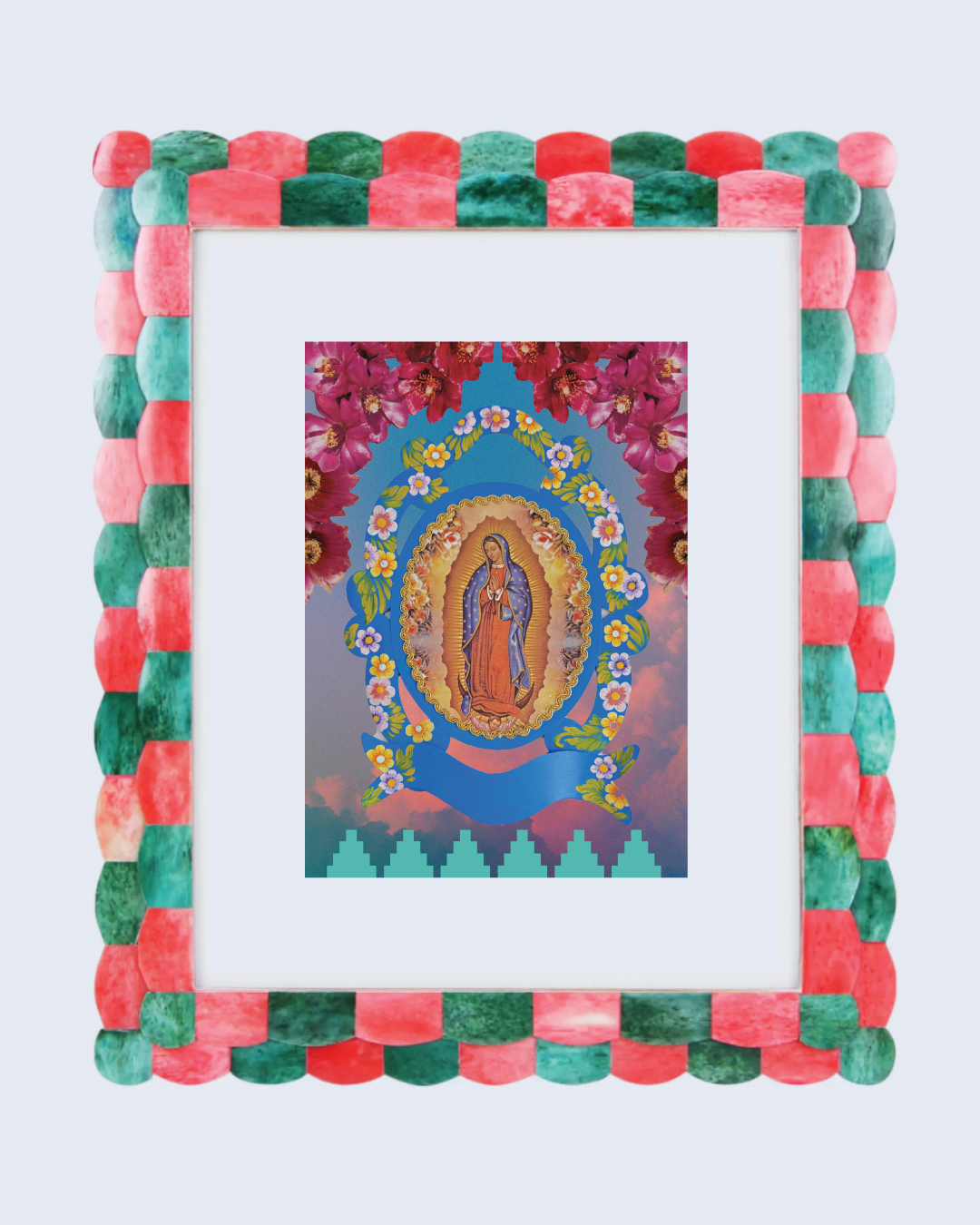 Image 1 of 1
Image 1 of 1


Nicho for Guadalupe
8×10” archival print on 130lb paper, fits 8×10 mat and frame with 5×7 opening. Mat and Frame not included.
The Holy Mother
The Virgin is my holy mother—an image rooted in my spiritual upbringing that modeled egalitarianism and a kind of divine Love that felt especially for women. Not more or less than for others, but uniquely ours: precious, intentional, and affirming. As a young girl, her image taught me to see value in myself.
Over time, and through my study of Mexican pre-colonial histories, my relationship to her began to expand. I came to recognize the embedded presence of Tonantzin—the sacred mothers of the Mexica pantheon—woven into her image. She is not a singular figure, but a layered one: a symbol of the Mexican spiritual dialectic, embodying both rupture and remembrance, conquest and continuity.
Her most well-known manifestation came in 1531, when she appeared to Juan Diego, an Indigenous Chichimec man, on the hill of Tepeyac—a place that had long been sacred to Tonantzin. Cloaked in stars, radiating golden light, and speaking in Nahuatl, she asked him to deliver a message to the Spanish bishop “Build a temple in my honor.” When Juan Diego was dismissed, she sent him again—this time with a cloak full of roses—her image miraculously imprinted on his tilma. It was not only a sign of divine presence, but a moment of cultural translation, a mestiza mother whose form carried memory and marked the beginning of a new era.
To me, she remains a bridge—between worlds, faiths, and eras.
$5 from each print sold will be donated to CHIRLA
8×10” archival print on 130lb paper, fits 8×10 mat and frame with 5×7 opening. Mat and Frame not included.
The Holy Mother
The Virgin is my holy mother—an image rooted in my spiritual upbringing that modeled egalitarianism and a kind of divine Love that felt especially for women. Not more or less than for others, but uniquely ours: precious, intentional, and affirming. As a young girl, her image taught me to see value in myself.
Over time, and through my study of Mexican pre-colonial histories, my relationship to her began to expand. I came to recognize the embedded presence of Tonantzin—the sacred mothers of the Mexica pantheon—woven into her image. She is not a singular figure, but a layered one: a symbol of the Mexican spiritual dialectic, embodying both rupture and remembrance, conquest and continuity.
Her most well-known manifestation came in 1531, when she appeared to Juan Diego, an Indigenous Chichimec man, on the hill of Tepeyac—a place that had long been sacred to Tonantzin. Cloaked in stars, radiating golden light, and speaking in Nahuatl, she asked him to deliver a message to the Spanish bishop “Build a temple in my honor.” When Juan Diego was dismissed, she sent him again—this time with a cloak full of roses—her image miraculously imprinted on his tilma. It was not only a sign of divine presence, but a moment of cultural translation, a mestiza mother whose form carried memory and marked the beginning of a new era.
To me, she remains a bridge—between worlds, faiths, and eras.
$5 from each print sold will be donated to CHIRLA
